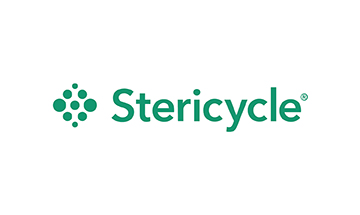Safe processing and disposal of healthcare waste is a vital part of the health economy; as the health needs of an ageing population grow, the quantity of healthcare waste is likely to grow too. This must be managed sustainably as part of society’s commitment to minimise the environmental impact of our activities and so reduce climate change.
Drawing on the input of industry experts and health service waste managers, we have identified how different parts of the waste management process could change to support a significant reduction in the healthcare sector’s carbon emissions relating to the disposal of clinical waste.
Minimising the quantity of waste
1. Reduce
Front-line health service staff decide how every item they use should be treated: reused, recycled, treated as general waste or as one of the various types of healthcare waste. Ensuring staff are trained and motivated to classify used items correctly will minimise the quantity of waste disposed of using methods with the greatest environmental impact.
Accurate segregation of waste suffered during the pandemic. In its early stages, when COVID-19 was poorly understood, many healthcare organisations understandably classified a high proportion of waste as potentially infectious. Gradually a better picture emerged of the COVID-19 risks from different types of waste, safely allowing less waste to be classified as infectious. However, some healthcare organisations have yet to modify their classification policies in the light of this new information, meaning more waste than necessary is still subject to disposal using processes with a higher environmental impact.
2. Reuse
As many healthcare products as possible should be re-usable. These include:
PPE: Some NHS trusts have already started using some reusable items of PPE, for instance FFP3 masks with replaceable filters. While these are more expensive to purchase than disposable equivalents, the total cost of ownership is lower as well as the environmental impact. Another advantage is that each member of staff has an individually-fitted mask always ready for use.
Medical devices: an increasing number of what were ‘single use’ devices are now capable of being recovered and ‘remanufactured’ by their makers for re-use, to standards approved by medical device regulators. As more manufacturers invest in these processes, the range of devices which can be reused in this way is likely to expand.
Waste containers: Single use plastic bins are commonly used for sharps waste and certain other waste types such as pharmaceutical and anatomical. They can be sterilised and re-used, rather than being incinerated along with the waste they contain. Stericycle’s BioSystems re-usable sharps containers can be used 600 times before needing to be replaced. This approach should be extended to all sharps containers and could be used for other single-use plastic waste containers.
3. Recycle
It is possible to extract the metal content from some sharps and medical instrument waste and recycle this in new products. This currently takes place on a limited scale and should be done more extensively.
Plastics, glass and paper can also be separated from other waste and recycled. This takes place on a large scale with non-healthcare waste and is currently being piloted with healthcare waste. If the technology proves fit for purpose for healthcare, it should be rolled out more widely.
Further investment in new technologies to recycle the metals, plastics, glass and paper used in healthcare is likely to increase the amount of material which can be recovered in this way.
4. Transportation
Carrying waste from its point of creation to processing and disposal plants generates carbon emissions from vehicles’ petrol and diesel engines. The waste industry is seeking ways to use electric vehicles and hybrids as extensively as possible to transport waste. Currently the largest trucks are too heavy to be powered electrically, although pilots are under way to improve the carrying capacity of electric and hybrid vehicles. There is also potential to use smaller, electric vehicles to pick up waste around large hospital sites, and from community healthcare sites.
Electric vehicle infrastructure could be rolled out in partnership with health service providers, who might for instance provide electric vehicle charging points or other measures to boost the capability of electric vehicles – for instance mains electricity points to allow an electric vehicle to operate waste loading equipment on a hospital site without draining its battery.
5. Waste processing and disposal plants
Processing healthcare waste through incineration creates considerable amounts of heat which can be used directly to provide heating and hot water for nearby facilities, such as the host hospital generating the healthcare waste, or to generate electricity. Some processing plants already use this heat and electricity to power their own operations, including charging electric vehicles, and this should be rolled out wherever practicable.
6. Minimising the environmental impact of waste disposal
Incineration has been the traditional mode of safely disposing of the most hazardous types of waste. However alternative treatment of healthcare waste can reduce the environmental impact of disposal. Waste can be treated to create ‘flock’ which can be burned as fuel or put to other uses, for instance as a timber substitute. Although some carbon emissions are created, the overall environmental impact –and carbon emissions – are lower than through incineration. Approaches such as this should be used wherever possible in disposing of healthcare waste.



